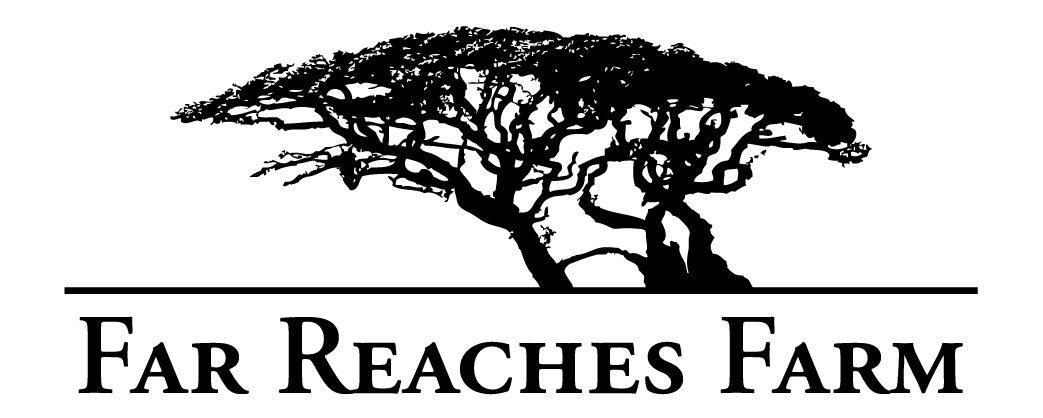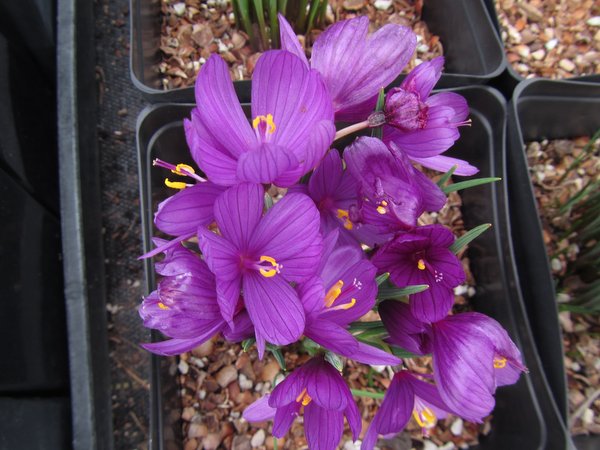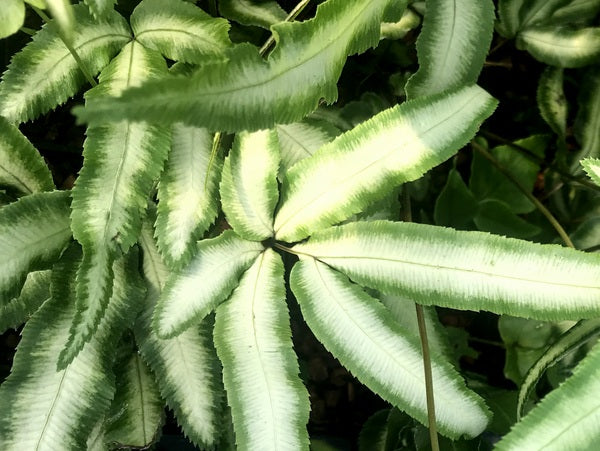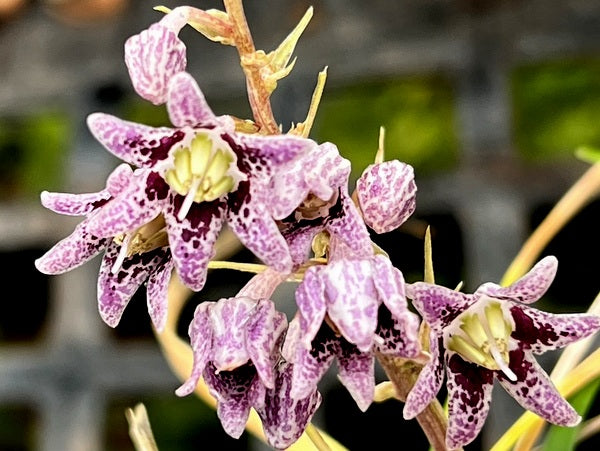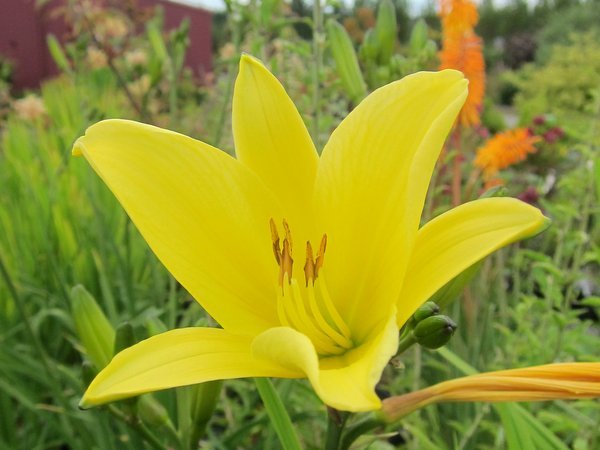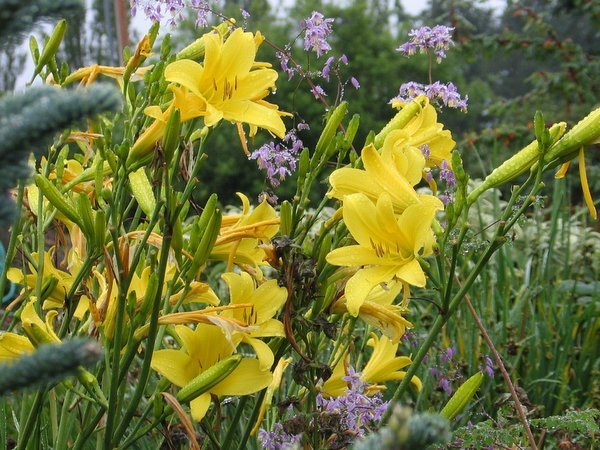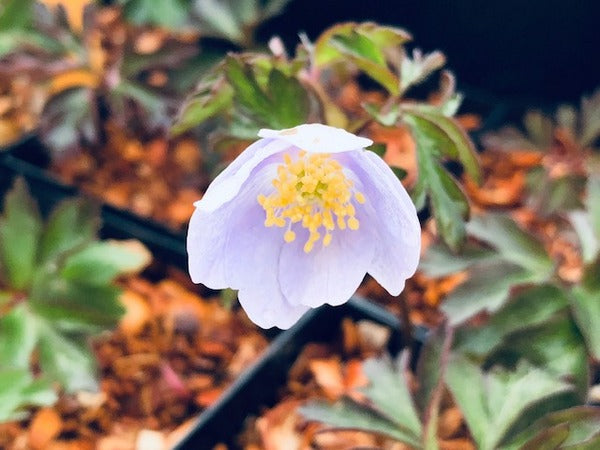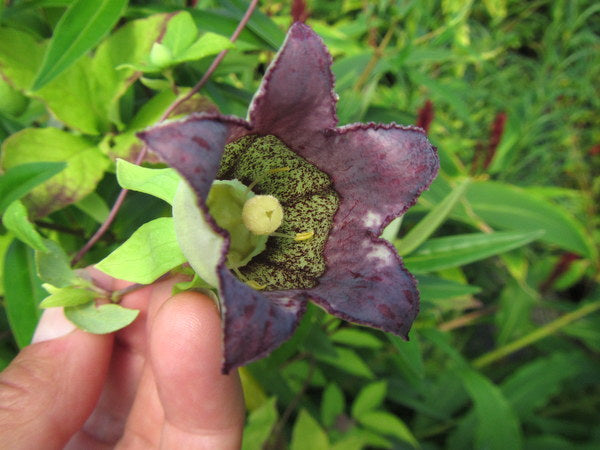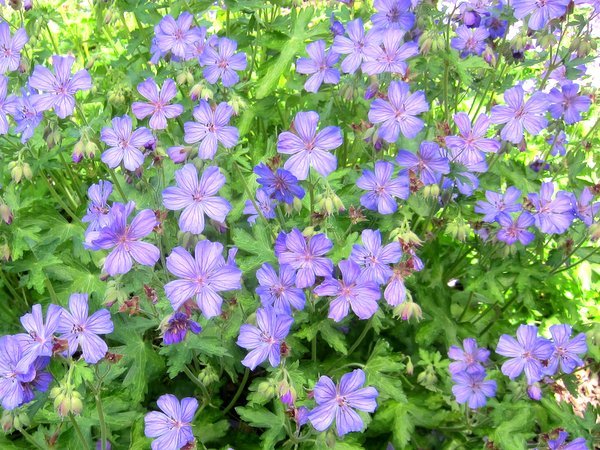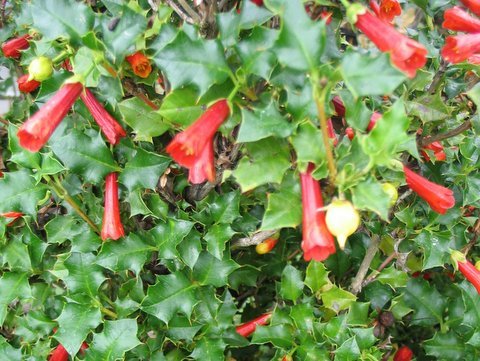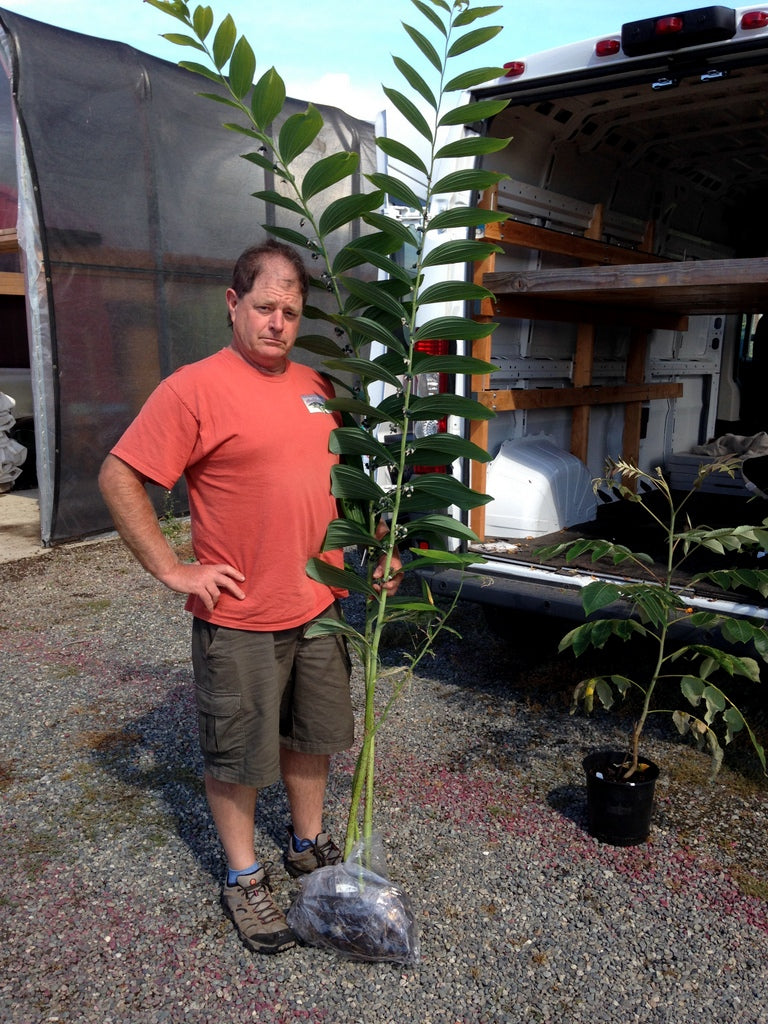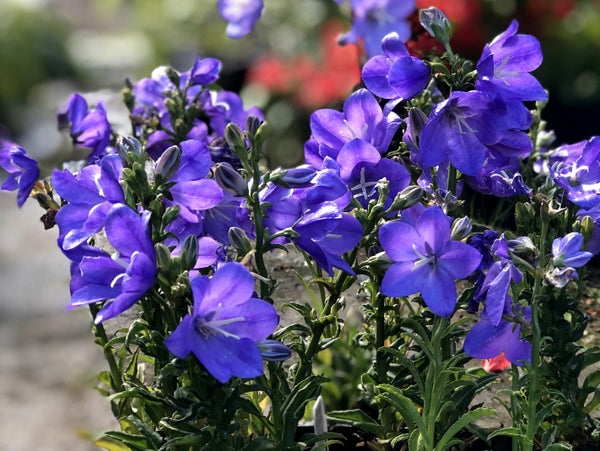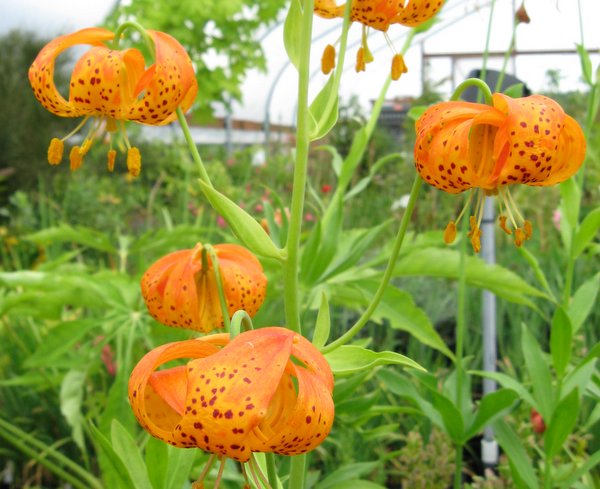Sort by:
1758 products
1758 products
A floriferous form of of our native Grass Widow with rounded petals. Like all of our Olsynium selections, this has been a long process of a decade or so to get this to a size where division is possible and we feel like we can safely release a few. Early flowering in Feb-Mar and fully dormant by summer. Myriad variants can be found in flower shape, color, size, time of bloom etc. and it would be easy to go Galanthus on this species in terms of collecting mania. We speak from first-hand experience on our Olsynium descent into madness. Multiple shoots which may or may not flower as it is hard to tell when dormant. This is a winter-spring moist plant which goes dry in summer in the wild where it grows in fairly heavy soil.
We're looking at a houseplant here for everyone except those with that San Francisco microclimate and if you are lucky enough to have such a thing, just for the record - we pretty much hate you. But we'll set aside the envy and sell you one of these astoundingly lovely ferns with long white ghostly fingered fronds.
One of the jewels in the tiara of shade garden royalty which is supposed to sound aristocratic and appealing and I believe it does. Put this little Chinese gem in a special spot where you can enjoy the white flowers over the patterned foliage. This would likely thrive in a moist rotting stump. Found up to 12000' in alpine meadows, we've also seen a tiny form in forests in Chongqing. These are from our own divisions.
Our collection from Guangxi on a mountain area little explored by Westerners. This Mondo Grass had leaves to 2' long and fairly lax. Flower stems just 3" tall with surprisingly nice mauve flowers that give way to typical shiny Ophiopogon fruit in the fall. Excellent textural evergreen for shade with a bonus of good flowers. Just a few. A Far Reaches Botanical Conservancy Offering
Silver Cloak Fern. At home over a broad stretch of Asia from Vietnam up to Siberia where it favors growing on rocks or walls in degraded - some say rotted - moss and organic matter. A low growing evergreen fern with startling white undersides to the leaves. Low water requirements once established. Most folks say zone 5 but we'll say 6.
Antique hybrid nearly lost to cultivation but thanks to Jim Fox, we can keep this going. Jim visited Graham Stuart Thomas at his home in England and Graham handed Jim his spade and insisted he dig a piece. As if God himself spoke, Jim obeyed. This is the kind of provenance that makes the Keno brothers animated on Antiques Roadshow. Narrow elegant yellow flowers and fragrant in the evening, this is such a nice change from the huge modern hybrids as it retains a nice species look which we gravitate towards. It is important to keep these heirloom plants going as many of Perry's introduction are now lost to cultivation. Hybridized by Amos Perry who was one of England's first two Daylily breeders and he registered 'Thelma Perry' in 1925 as a hybrid with H. thunbergii as the pod parent and H. citrina as the pollen parent.
A silver-patterned selection of this durable garden species of Jack in the Pulpit. A silver wash plays along the midrib of each leaflet spoke in the radial foliar wheel which makes this exotic leaf even more exotic. Green flowers with a long drip tip on the spathe limb cap turn into fruit like an orange ear of corn and you are on your way to lots more.
A selection of this outstanding European alpine species notable for having large flowers and being quite a good bloomer. Not all acaulis flower freely but 'Krebs' brings it with large upward-facing trumpets of impossible blue except they are right there in front of you so it must be possible but how can such a tight mat of small green adpressed leaves produce such a fantastical display of color intensity? The good thing is we don't have to know how and why about everything and sometimes it is quite enough to have your senses left reeling by a wee bit of green that does something so flamboyant that it would leave Sir Richard Branson shaking his head in rueful acknowledgment at having been thoroughly bested. We were so excited to finally get this clone that we told all of our friends we got 'Krebs' and it was a long time before we noticed no one was coming over or inviting us to dinner. Our friends aren't plant people for the most part so the misinterpretation was understandable and most have come back once we explained but we really miss Rich and Karen.
Interesting genus in the Bellflower or Campanula family and we try to grow as many different ones as possible. Just how long can we last growing unprofitable plants is a question we ponder. This is one of the better ones for the garden making perennial carrot roots and annual vines to 4' with tubby cream flowers with purple corolla lips. Z5 at least.
Absolute rock hardy jewel from Lebanon and Syria. Well. it's rock hardy here anyway - we know that means something entirely different in Minot. This is perfect for our area as it is winter growing and summer dormant so our Mediterranean dry summers feels a lot like home to it. Surprisingly, it has been very tolerant of being watered all the time while dormant so it is more cosmopolitan than one might guess its geography. Blooms in late spring with lots of lavender-blue flowers on stems up to 18" and after flowering it disappears until Fall. Not often available and we have the inimitable John Flintoff to thank for sharing this with us.
A monotypic member of the Columelliaceae family from Chile. Now that we have our botanical parameters firmly in place, we find ourselves exactly where we started. As Obama would say, "Let me be perfectly clear. This is not a Holly." Evergreen and best in a mild garden with tubular red-orange flowers.
Fantastic New Zealand tree-like Asparagaceae member, its cousin C. australis isn't uncommon as a houseplant or tropical, winter garage-dweller; but this rarer species features broader leaves and slightly more cold tolerance. Still relegated to summer-only or houseplant status for most of us, and a bit trickier to grow in exchange for its elevated appearance. Requires moist but very well drained soils and doesn't cope well with intense summer heat. For those looking for a rewarding challenge and a unique appearance not easily found elsewhere there is a lot to enjoy here.
Extraordinary yellow-flowered evergreen species from northern Vietnam on this collection. The trees in the wild were all small second-growth trees with mature examples nowhere in evidence. That night we slept in a nearby farmer's house with our sleeping bags on wide flooring planks of magnolia wood - mystery solved where the big trees went. Best in a sheltered spot from freezing winds. Young plants of this choice species.
An uncommon and variable species, this form can get stoutly immense to over 6' with broad paired leaves and fine white (no surprise there) bell-shaped flowers. This was shared with us as a large bare root division in full bloom with the single stem taller than us which prompted much hilarity. Contrary to intuition, this is the best time to divide Polygonatum. These are not divisions as they wouldn't fit in a shippable pot but younger plants grown from seed. Enjoy!
Always vying for Top Hebe in our esteem, this compact grower sports narrow blue-gray leaves with months of white flowers. Our plant has weathered our worst winters with nary a whimper and is at this moment of writing on August 5, without fault, well into month two of blooming. We had the good fortune to have superstar UK garden photographer Andrea Jones visit the summer of 2013 and our 2'x3' plant of Hebe recurva, which was underplanted with Mertensia maritima, was looking smashing. The Mertensia had of its own accord draped a stem over the Hebe and was at its peak with its own even bluer leaves and its small sky-blue flowers. Andrea homed in on this like she was laser-guided and we only wished that we could take credit for the artistry. She was kind giving us credit for the combination while creating the space for serendipitous opportunity.
